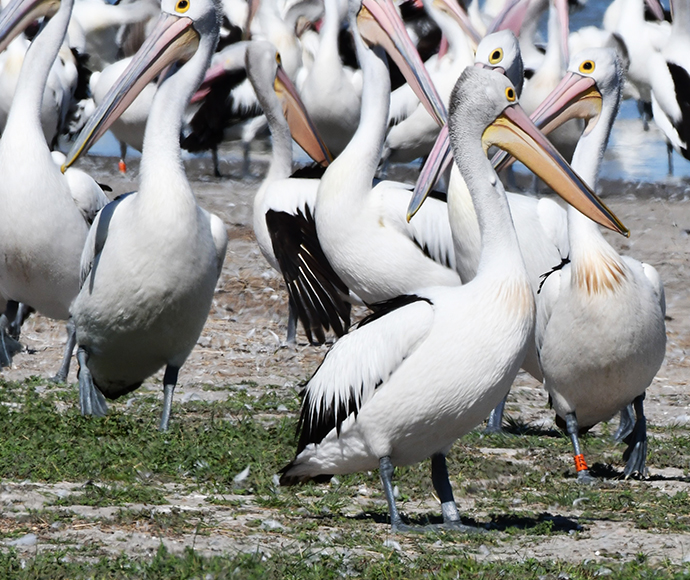Scientists hope the secret lives of Australian Pelicans will be revealed in more detail thanks to a project tracking the travel habits of these majestic birds.

More than 1,200 birds across three locations have so far been fitted with brightly coloured leg bands which show where the pelican hatched.
Scientists from the Department of Planning and Environment (DPE) are now calling on the public to log any sightings of the banded birds to help build a picture of their movements.
"Once pelican chicks fledge, they take to the skies but where they choose to go and nest is critical data we are keen to collect," said senior scientist Dr John Porter.
"We can use this information to make decisions on wetland and water management for sites favoured by the pelicans and to find out if pelicans prefer to return to where they hatched to breed."
Almost 400 birds were banded at Narran Lake in late March and bird watchers should look out for pelicans returning to coastal regions from May.
The pelican banding project has been running since 2017, with Narran Lake added for the first time this year.
Narran Lake birds will sport a numbered black band. Blue bands indicate the pelican hatched in the Gayini Wetlands while birds from Lake Brewster have orange leg bands.
Victorian pelican nesting sites use red and green leg bands.
The pelican research includes the University of NSW, WaterNSW and the Lake Cowal Foundation as project partners. The Nari Nari Tribal Council who manage Gayini Wetlands and a private property owner at Narran Lake have generously allowed access to breeding pelicans.
Fully grown pelicans have a wingspan of around 2.5 metres which means they can travel considerable distances. One adventurous Lake Brewster banded bird has been spotted 650 kilometres away in St George, Queensland, while two Lake Brewster banded birds recently arrived at the Narran Lake colony. Narran Lake is 400km from Lake Brewster.
UNSW Sydney Centre for Ecosystem Science, Senior Research Fellow, Dr Kate Brandis, said learning where juvenile pelicans travel to once they fledge is important in understanding which wetlands they use, to help us better manage the species and wetlands.
"In the case of the Narran Lake colony, until this year pelicans had not bred at the Lake since the 1990s as there had not been sufficient flooding to support them for the 6 months needed to successfully raise chicks.
"If we find pelicans do return to their hatching place to breed, maintaining suitable habitat at Narran Lake for this cohort to return to in a few years' time is essential to helping support Australian Pelicans into the future," Dr Brandis said.






